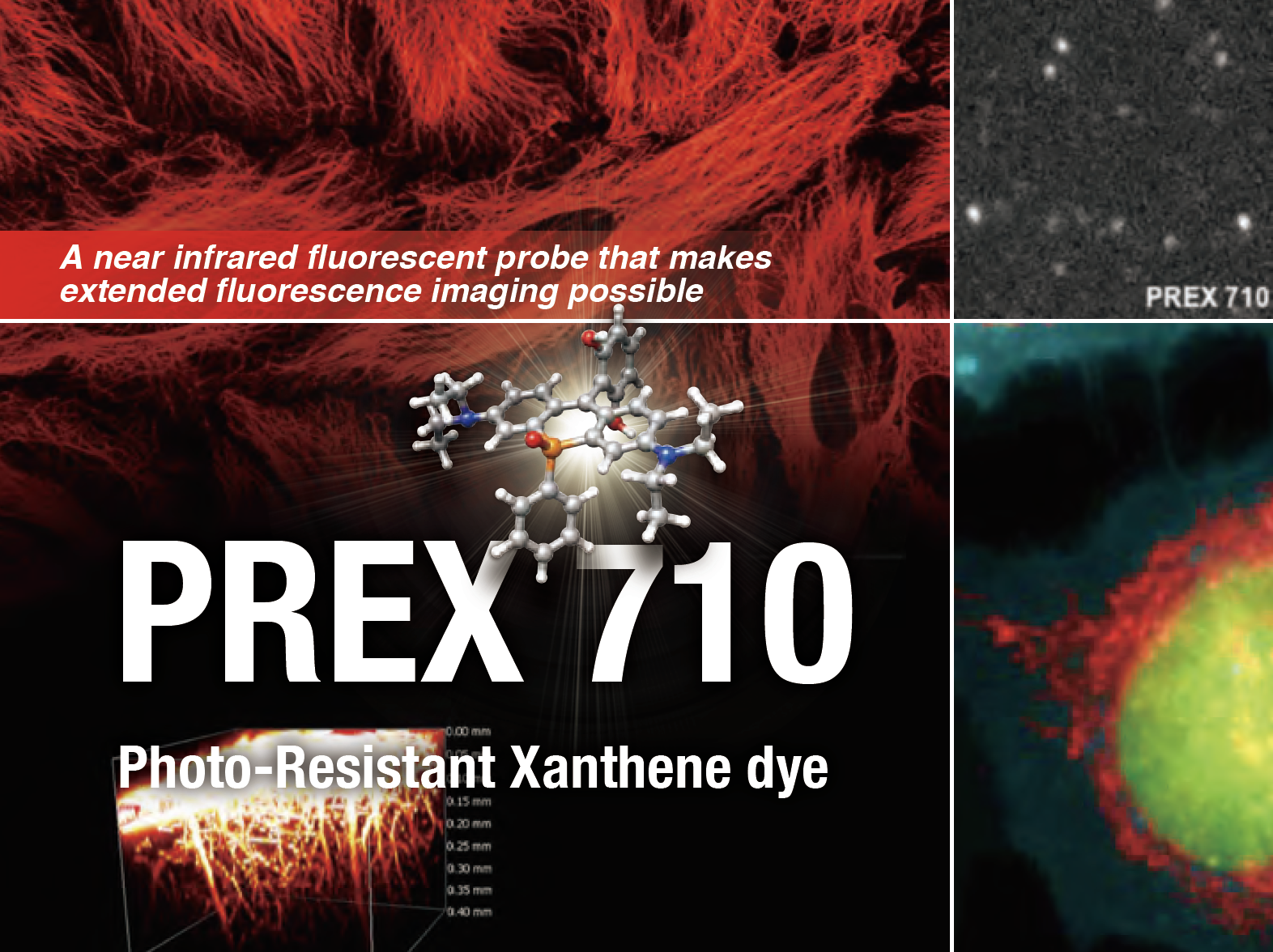
The super fluorescent dye that life scientists have been waiting for
A variety of molecules have their own individual roles in sustaining life. Fluorescence imaging is a powerful tool for understanding the dynamics of biological processes in life – their functions, movements and structural changes. However, with existing imaging technology which only makes use of the visible light and ultraviolet spectra, damage to cells due to exposure to light and noise in images caused by autofluorescence (fluorescence produced by existing matter within the organism’ s structure) have been consistent problems. In addition, since visible light can only reach a very limited depth, it is not suitable for the observation of blood vessels or internal organs. This problem can be overcome by making use of the near infrared spectrum instead. However, with the limited chemical and photostability of currently available near infrared dyes, it has not yet been possible to make these observations for anything other than a very short period of time.
The ITbM research group has successfully developed a near infrared dye, PREX 710, with exceptionally high chemical and photostability as a new tool for life science research. When PREX 710 is used as a marker, it is possible to observe a living specimen in a non-invasive fashion for longer periods of time without noise, a technology that researchers in both the life science and medical fields have been eagerly waiting for.
A wide range of practical applications, from tracing a single molecule to deep tissue imaging
The single molecule imaging method is a technique that involves marking the biomolecule that is to be observed, for example a protein, with a fluorescent dye and following it at the molecular level. The strong laser beam required for this causes existing fluorescent dyes to lose their color in a matter of seconds, but PREX 710 produces a detectable signal for over two minutes. In addition, since near infrared light can easily penetrate living tissue, it is possible to observe deep biological tissue, such as capillary blood vessels in the brains of mice, in 3D. It is not an overstatement to say that PREX 710, with its wide range of applications from single molecule to deep tissue imaging, is a transformational molecule in its field.
Reference
"A Highly Photostable Near-Infrared Labeling Agent Based on a Phospha-rhodamine for Long-Term and Deep Imaging" by Marek Grzybowski, Masayasu Taki, Kieko Senda, Yoshikatsu Sato, Tetsuro Ariyoshi, Yasushi Okada, Ryosuke Kawakami, Takeshi Imamura, and Shigehiro Yamaguchi, Angew. Chem. Int. Ed. 2018, 57, 32. DOI: 10.1002/anie.201804731